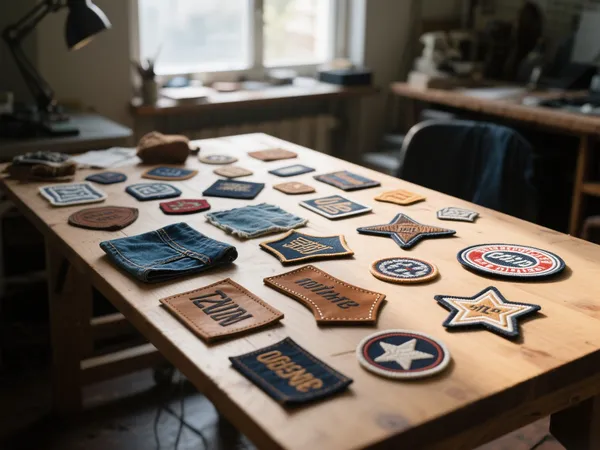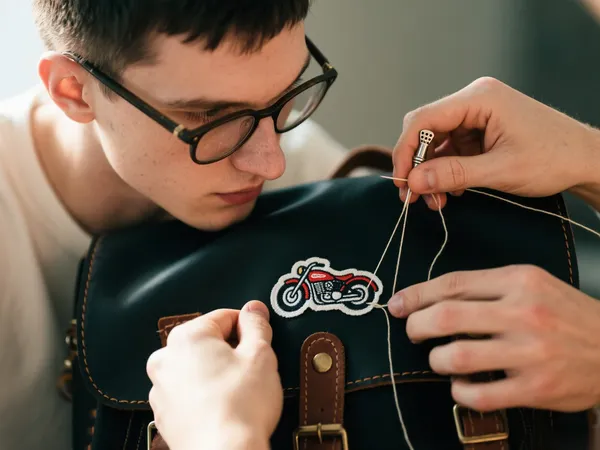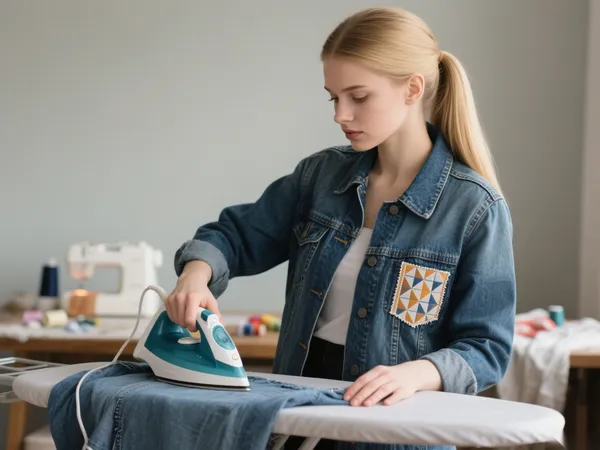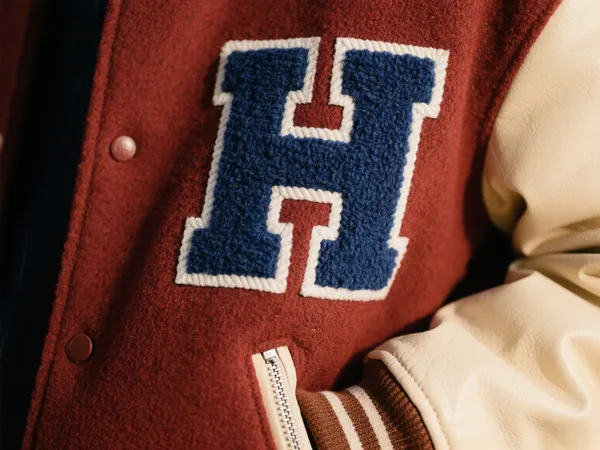When it comes to customizing clothing, bags, or accessories, patches are a timeless and versatile solution. From fashion design and branding to DIY repair and creative expression, patches serve both decorative and functional purposes. One of the most common questions people ask when purchasing or applying patches is: iron on vs sew on patches — which is better?
Each method has its own advantages depending on the type of material, usage, and personal preference. In this article, we’ll explore the difference between iron on and sew on patches, their pros and cons, and how to choose the right one for your project.

Que sont les patchs thermocollants ?
Patchs thermocollants come with a layer of heat-activated adhesive on the back. When heat and pressure are applied—usually with a household iron—the glue melts and bonds the patch to the fabric.
Pros of Iron-On Patches:
- Facile à appliquer: No sewing skills required; takes just a few minutes with an iron.
- Gain de temps: Ideal for quick repairs or DIY customization.
- Clean Look: Adhesive layer ensures a flat, uniform appearance.
- Great for Casual Use: Suitable for t-shirts, denim jackets, backpacks, hats, and more.
Cons of Iron-On Patches:
- Less Durable for Heavy Use: Over time, adhesive may weaken with frequent washing or rough wear.
- Not Ideal for All Fabrics: Doesn’t adhere well to nylon, leather, or stretchy fabrics.
- May Peel Over Time: Especially if not applied correctly or washed frequently in hot water.

Que sont les patchs à coudre ?
Patchs à coudre require stitching through the fabric to secure them. They usually don’t come with adhesive backing and must be sewn by hand or with a machine.
Pros of Sew-On Patches:
- Long-Lasting Hold: Stays securely attached through washing, wear, and tough conditions.
- Application polyvalente: Works on nearly all fabric types, including heavy-duty or stretchy materials.
- Finition professionnelle: Often preferred by fashion designers, military uniforms, or motorcycle apparel.
- Réutilisable: Can be removed and resewn onto other garments if needed.
Cons of Sew-On Patches:
- Requires Sewing Tools/Skills: Not ideal for beginners unless using simple hand stitching.
- Takes More Time: Application can be slower compared to iron-on methods.
- Temporary Holding May Be Needed: May require pinning or fabric glue to keep in place while sewing.

Iron On vs Sew On Patches: Key Differences
| Fonctionnalité | Patchs thermocollants | Patchs à coudre |
|---|---|---|
| Application | Heat-activated with an iron | Needle and thread or machine |
| Ease of Use | Very easy and beginner-friendly | Requires sewing knowledge |
| Durabilité | Moderate | High |
| Fabric Compatibility | Best for cotton, denim, canvas | Works on most fabrics |
| Apparence | Smooth, adhesive-backed | Can create a more handcrafted look |
| Réutilisabilité | Typically single-use | Can be removed and reused |
Which One Should You Choose?
The decision between iron on vs sew on patches depends on your goals, skills, and the fabric you’re working with.
Choisir Patchs thermocollants If:
- You want a quick, no-fuss application
- You’re customizing casual wear
- You’re using cotton, denim, or canvas
- Durability is not a major concern
Choisir Patchs à coudre If:
- You need a long-lasting solution
- You’re working with thick or synthetic materials
- The item will be frequently washed or worn
- You want a more professional or traditional finish

Pro Tip: Combine Both for Extra Strength
Many people choose to iron on the patch first, then sew around the edges for a secure, reinforced hold. This hybrid method combines the best of both worlds—easy placement and long-term durability.
Réflexions finales
Comprendre le difference between iron on and sew on patches can save you time, money, and frustration in your customization projects. While iron-on patches offer simplicity and speed, sew-on patches provide long-lasting strength and versatility.
Whether you’re repairing a backpack, decorating a jacket, or branding a uniform, choosing the right patch application method ensures your design looks great and lasts for the long haul.



